Newmarket in Suffolk is home to British racing, as the Curragh is in Ireland.
Apart from the racecourse, it is the headquarters of the sales company, Tattersalls, and it has a myriad of training yards.
Last weekend, the town staged two days of activities, in aid of charity, that attracted many thousands of visitors. Many trainers opened their yards and people could literally get up close to their equine fancies.
Trainers were on hand to talk with them about their charges, and this centrepiece of the weekend was supported by a number of other events.
One such supporting act, so to speak, was an opportunity to visit the Jockey Club Rooms, hallowed ground situated on the High Street in the town. The rooms moved from St James’s in London to Newmarket in 1752. The sumptuous building contains many great paintings that chart the history of one of the oldest sports in the country.
While the Jockey Club Rooms is not open to the public as such, access to the collection is possible from time to time, and a request from avowed art connoisseurs will often be accommodated. If you are ever fortunate enough to be able to visit (you can book to stay in their rooms), make sure you allow lots of time. The collection of sporting art and racing memorabilia is the result of hundreds of years of gifts and bequests.
A display with a difference
What is striking, however, is that all are displayed as though you were entering someone’s home. There is no museum or gallery feel to the displays, and you can see them all in a highly relaxed manner. This makes the experience all the more special.
Among the finest pieces in the collection came from possibly the largest bequest made to the Jockey Club, that of the first Lord Wavertree. His father, not an art collector, donated the Walker Art Gallery to the city of Liverpool. Lord Wavertree in 1900 purchased the lands around Tully in Co Kildare to establish a stud farm, now the world-renowned Irish National Stud.
On his death, Wavertree left a sizeable collection of works to the Liverpool gallery, while most of his sporting art is now in the care of the Jockey Club Rooms. Unlike modern galleries and museums, most of whose works are in storage and not on public display, the Jockey Club Rooms, the nearby National Horseracing Museum and other places accommodate the display of almost all their works.
Sophie’s choice
There have been many brilliant equine artists, their fame extending beyond simply being known as painters in a particular genre. Three stand out for me – John Frederick Herring senior, Sir Alfred Munnings and George Stubbs. All have works on display in Newmarket.
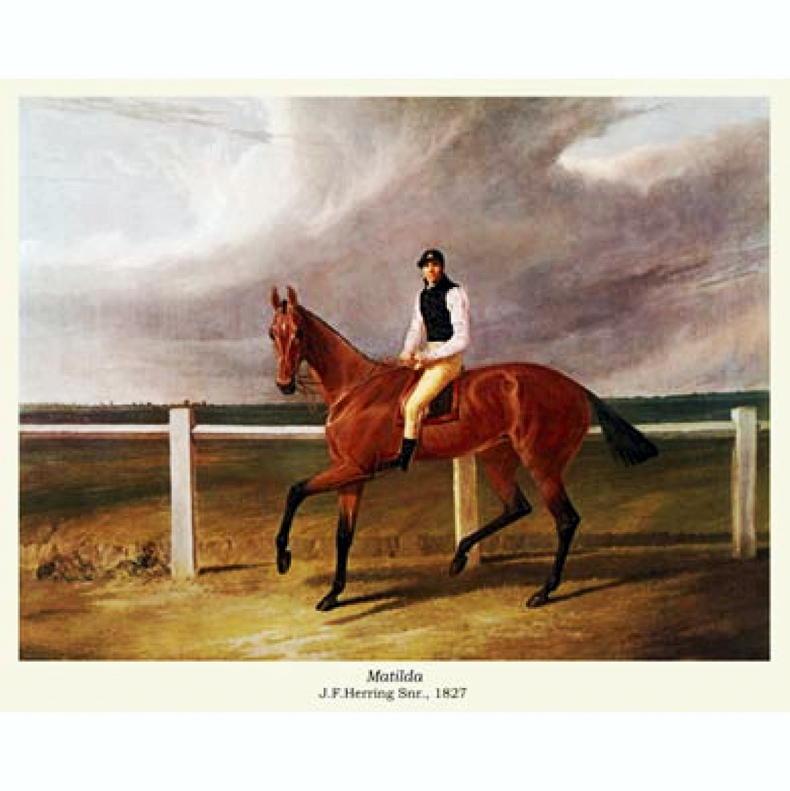
John Frederick Herring's Matilda.
I am did the impossible and selected just one for this column, and that would be Herring’s depiction of the filly Matilda. She won the St Leger in 1827 for the Honourable Edward Petre of Stapleton Park, near Doncaster where she gained her famous victory. Herring painted her two years later.
The most striking aspect of the painting is the femininity of the filly, but a closer look at the picture and you see her steeliness and, as it was summed up in a poem, she is: “Snorting and prancing – sidling by with arching neck and glancing eye.”
Read more
The Front Row: the Wild Atlantic Way in art form
The Front Row: theatre back in Dublin
Newmarket in Suffolk is home to British racing, as the Curragh is in Ireland.
Apart from the racecourse, it is the headquarters of the sales company, Tattersalls, and it has a myriad of training yards.
Last weekend, the town staged two days of activities, in aid of charity, that attracted many thousands of visitors. Many trainers opened their yards and people could literally get up close to their equine fancies.
Trainers were on hand to talk with them about their charges, and this centrepiece of the weekend was supported by a number of other events.
One such supporting act, so to speak, was an opportunity to visit the Jockey Club Rooms, hallowed ground situated on the High Street in the town. The rooms moved from St James’s in London to Newmarket in 1752. The sumptuous building contains many great paintings that chart the history of one of the oldest sports in the country.
While the Jockey Club Rooms is not open to the public as such, access to the collection is possible from time to time, and a request from avowed art connoisseurs will often be accommodated. If you are ever fortunate enough to be able to visit (you can book to stay in their rooms), make sure you allow lots of time. The collection of sporting art and racing memorabilia is the result of hundreds of years of gifts and bequests.
A display with a difference
What is striking, however, is that all are displayed as though you were entering someone’s home. There is no museum or gallery feel to the displays, and you can see them all in a highly relaxed manner. This makes the experience all the more special.
Among the finest pieces in the collection came from possibly the largest bequest made to the Jockey Club, that of the first Lord Wavertree. His father, not an art collector, donated the Walker Art Gallery to the city of Liverpool. Lord Wavertree in 1900 purchased the lands around Tully in Co Kildare to establish a stud farm, now the world-renowned Irish National Stud.
On his death, Wavertree left a sizeable collection of works to the Liverpool gallery, while most of his sporting art is now in the care of the Jockey Club Rooms. Unlike modern galleries and museums, most of whose works are in storage and not on public display, the Jockey Club Rooms, the nearby National Horseracing Museum and other places accommodate the display of almost all their works.
Sophie’s choice
There have been many brilliant equine artists, their fame extending beyond simply being known as painters in a particular genre. Three stand out for me – John Frederick Herring senior, Sir Alfred Munnings and George Stubbs. All have works on display in Newmarket.

John Frederick Herring's Matilda.
I am did the impossible and selected just one for this column, and that would be Herring’s depiction of the filly Matilda. She won the St Leger in 1827 for the Honourable Edward Petre of Stapleton Park, near Doncaster where she gained her famous victory. Herring painted her two years later.
The most striking aspect of the painting is the femininity of the filly, but a closer look at the picture and you see her steeliness and, as it was summed up in a poem, she is: “Snorting and prancing – sidling by with arching neck and glancing eye.”
Read more
The Front Row: the Wild Atlantic Way in art form
The Front Row: theatre back in Dublin






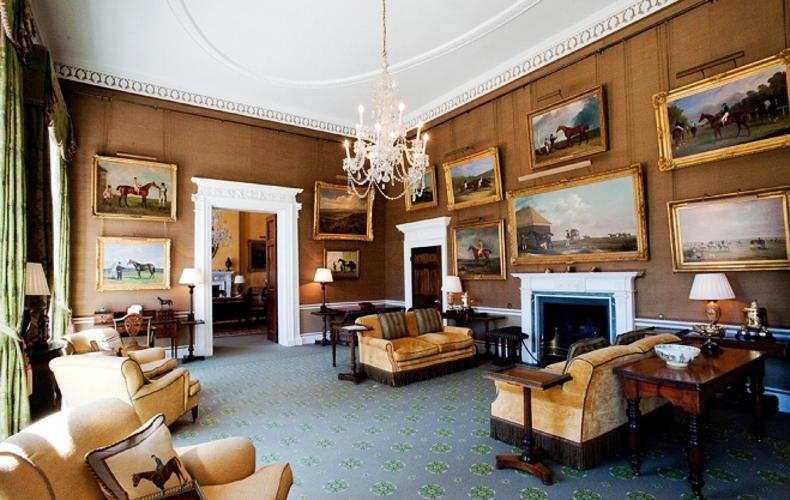
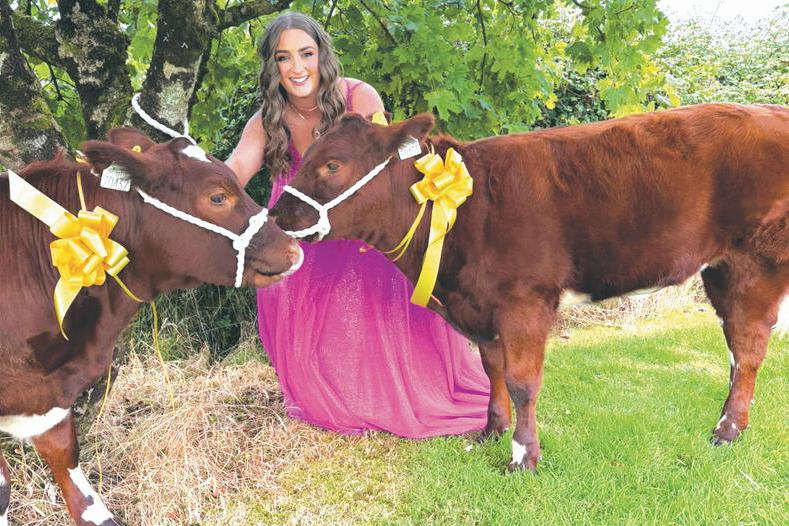
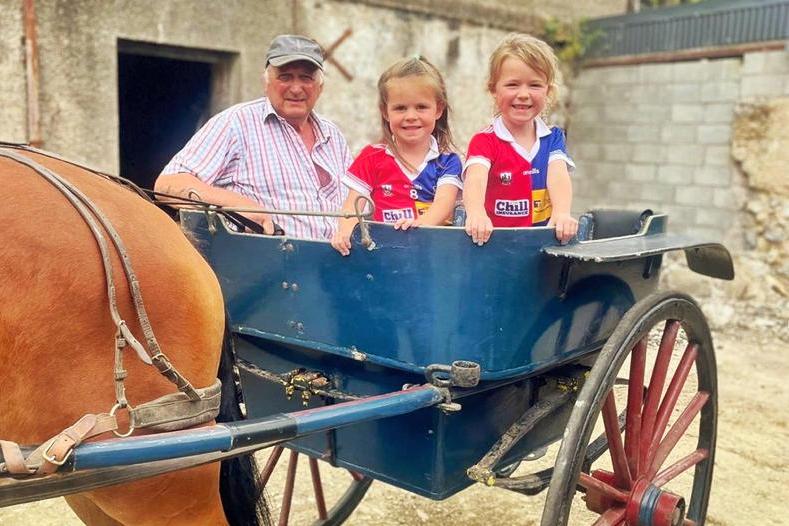

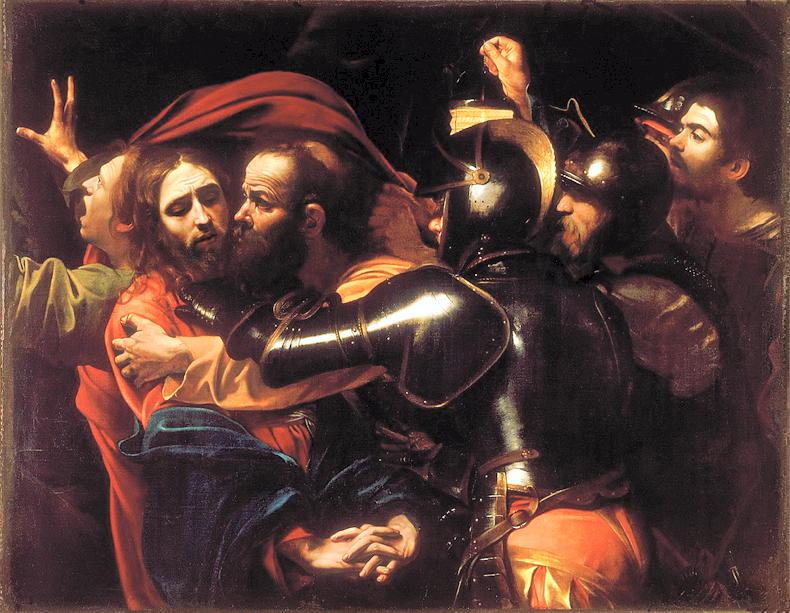
SHARING OPTIONS